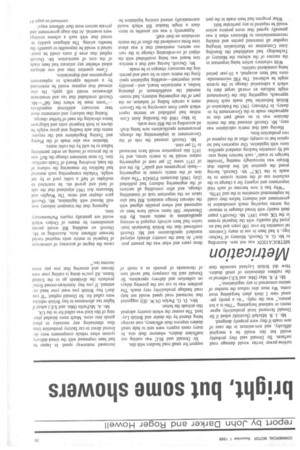Metrication
Page 41

If you've noticed an error in this article please click here to report it so we can fix it.
METRICATION was not new. According to Mr. G. A. Oscroft, Ministry of Technology, it had been in use in many Continental countries for over 100 years and had enjoyed full equality with the Imperial system in the UK since 1897. Mr. Oscroft's paper dealt mainly with broad changes in measuring norms requiring much consultation in government and industry before they could be implemented sometime in the mid 1970s.
"Why has it now become of such vital importance and urgency for a change to the exclusive use of the metric system to be made in the UK?" Mr. Oscroft, having posed the question left few doubts that Britain was increasingly meeting "invisible barriers to trade", such barriers being erected b'y countries backing standard specifications with legislation. Our exporters had no option but to comply often at the expense of two production lines.
Having said that metric calculation was easy, Mr. Oscroft stressed that the metric decision was in no small part due to approaches made to the Government by industry. In February 1965 the Federation of British Industries had made such formal approach, suggesting that the Government might indicate an overall target date by which a substantial change to the system might be achieved. The FBI recommendations had been accepted, a 10-year period being considered realistic.
With voluntary action being important to the success of the scheme the Ministry of Technology had established the Standing Joint Committee on Metrication bringing together all interested parties and making recommendations to Ministers when it was generally agreed that more positive action would be required in any particular field.
What progress had been made in the past three years and what was the present position? At least the country already enjoyed standard specifications and Mr. Oscroft confirmed that the British Standards Institution had been actively engaged in revising specifications in metric terms. By this December 500 items would have been so expressed. and where possible aligned with the relevant foreign standard. BSI had also taken on the important task of timetabling change, and after consulting all sections of the engineering industry had published (July 1968) document PD6424 "The adoption of the metric system in engineering —basic programme and guide". By the end of 1971 some 25 per cent of engineering output would be in metric terms, and by 1975 this proportion would have increased to 75 per cent.
Mr. Oscroft stressed the role of the Government in implementing the change, procurement specifications now being drafted according to the BSI time scale.
In May 1968 the-Standing Joint Committee had published an interim report which apart from conveying to the Government a certain feeling of isolation on the part of the engineering industry, had recommended the establishment of planning bodies, a metrication board, and—possibly most important--enabling legislation specifying the metric units to be used and permitting the necessary changes to be made.
Mr. Oscroft, having said that a metrication board was being established with the object of co-ordinating change in the various sectors, mentioned that it was about time firms considered the effect of the metric revolution on their staff.
Apparently it was not possible to introduce a single blanket Bill which would automatically amend existing legislation be
cause the degree of accuracy of conversion of Imperial to metric units required varied between different Acts. According to Mr. Oscroft an enabling Bill would permit amendments by means of Orders which would not generally require Parliamentary time.
Agreeing that the transport industry was well blessed with legislation, Mr. Oscroft gave chapter and verse. The Weights and Measures Act 1963 stipulated that the sale of land and gravel etc. be restricted to multiples of half a cubic yard or by net weight. Vehicles transporting such material had facilities for measuring the volume of the load, involving Board of Trade certification. To meet imminent change the BoT was in the process of issuing an order permitting ballast to be sold by the cubic metre.
Mention was also made of the Plating and Testing . Regulations and the requirements that axle loading and gross weight be shown in both Imperial units and kilograms hence obviating the need of further change.
Stating that industry and commerce must bear necessary additional expenditure —"costs must lie where they fall"—Mr. Oscroft concluded that tax and investment allowances would still apply. He also stressed that expense would be minimized by a sensible approach to replacement programmes and depreciation.
Came question time and one delegate asked whether any estimate had been made of the cost of metrication. Mr. Oscroft replied that even if costs could be ascertained it would be impossible to quantify the benefits arising. The delegates quickly retorted that with such a scheme eostings were essential. At this stage government and private sectors went their different ways!




































































































